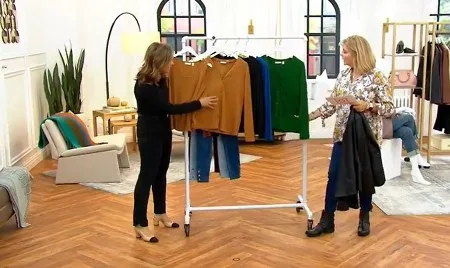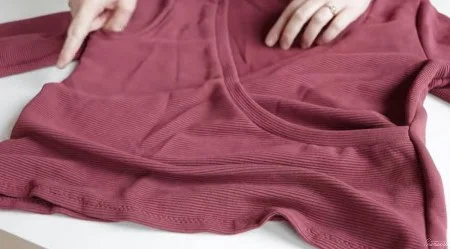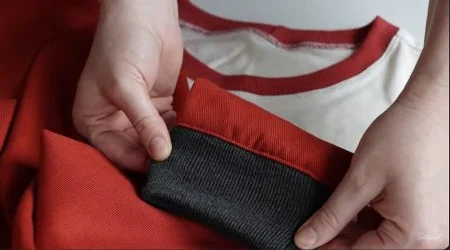Rib fabric
Rib fabric, also known as ribbing or rib knit, is a unique type of textile that finds its application in various areas of the fashion industry. It stands out due to its distinctive appearance and stretchability, making it highly versatile for creating comfortable, form-fitting garments.
"Rib" refers to the raised vertical lines that run parallel across the fabric's surface. These ribs are created by alternating rows of knit and purl stitches, giving rise to a textured pattern. The resulting material has excellent elasticity and recovery properties, allowing it to conform well to different body shapes while maintaining its shape over time.
Thanks to technological advancements and manufacturing techniques, modern rib fabrics incorporate additional features such as moisture-wicking properties or antibacterial treatments. These innovations enhance comfort levels further by keeping the wearer dry during physical activities or preventing odour-causing bacteria from proliferating.
Rib fabric's popularity extends beyond clothing into other domains like home decor items (e.g., pillow covers blankets) and even industrial applications (e.g., automotive textiles, upholstery). Its ability to provide both comfort and durability makes it suitable for various contexts where functionality and aesthetics converge.
Furthermore, rib fabrics are available in a wide range of materials, including natural fibres like cotton or wool, synthetic fibres such as polyester or nylon, and blends that combine the best qualities of different fibres. This extensive selection ensures designers have ample opportunities to create garments with specific characteristics tailored to their vision.
Rib fabric characteristics
i. One key characteristic of rib fabric is its flexibility. Due to the interlocking nature of the knitted structure, ribbed textiles possess inherent stretchiness both horizontally and vertically. This quality enables them to expand comfortably when worn while ensuring they retain their original shape after stretching. Consequently, rib fabrics are often used in garments that require ease of movement or close body fit, such as cuffs, collars, waistbands, and hems.
ii. Another advantage offered by rib fabrics is their durability. The tight construction achieved through knitting ensures enhanced strength compared to other types of woven or jersey fabrics. As a result, these textiles can withstand frequent washing cycles without losing shape or developing excessive wear and tear.
iii. Additionally, rib fabrics come in various weights ranging from lightweight versions suitable for t-shirts or summer dresses to heavyweight options ideal for cosy sweaters or winter accessories like scarves and hats. This versatility allows designers ample choices when selecting appropriate materials based on desired aesthetics and functionality.
iv. Its unique texture, elasticity, durability, and versatility make it a highly sought-after material in the fashion industry. Whether used for constructing essential elements like cuffs or collars or as the main fabric for entire garments, its inherent qualities contribute to creating comfortable clothing that withstands daily wear while adhering to contemporary style trends. As technology advances and innovations emerge in textile production processes, we expect further improvements in the performance of rib fabric.
Rib fabric types
Regarding fabric types, rib fabrics are renowned for their distinct texture and versatility. Rib fabrics are characterized by raised vertical or horizontal ridges running along the material's surface, creating a unique ribbed pattern. These fabrics offer aesthetic appeal and functional properties that make them suitable for various applications in the world of fashion and beyond.
There are several rib fabrics, each with its characteristics and uses. Let's explore some of these popular rib fabric types:
i. 1x1 Rib: The 1x1 rib is the most common type of rib fabric. It consists of alternating raised vertical ribs and depressed valleys, forming a classic pattern often seen in T-shirts and other casual garments. This type of rib fabric is known for its excellent stretchability, making it ideal for body-hugging clothing items where comfort is key.
ii. 2x2 Rib: Similar to the 1x1 rib, the 2x2 rib features two raised ribs followed by two depressed valleys. This creates a broader textured pattern than its counterpart but maintains good stretch capabilities. The 2x2 rib is frequently used in cuffs, collars, and waistbands due to its ability to provide structure while allowing flexibility.
iii. Baby Rib: As its name suggests, baby rib refers to a finer version of traditional ribs with narrower ridges that give it a more delicate appearance. Baby ribs typically have smaller interwoven rows than standard ribs like the 1x1 or 2x2 variants mentioned earlier. Due to their softness and subtle texture, baby ribs are excellent for creating lightweight tops or undergarments that hug the body comfortably.
iv. Cable Knit Rib: Cable knit ribs combine elements from both traditional cable knits and classic rib patterns, resulting in visually striking textures on sweaters or cardigans. The intertwining cables add depth while maintaining the elasticity provided by the ribbed structure. Cable knit ribs are cosy and luxurious, making them perfect for winter garments.
v. Waffle Rib: The waffle rib features a distinctive raised square pattern that resembles the texture of a waffle. This type of rib fabric is created by alternating vertical and horizontal ridges in a grid-like formation. Waffle ribs are known for their thermal properties, as the raised squares trap air to provide additional insulation. These fabrics are often used in clothing designed for colder climates or as lining materials.
vi. Flat Rib: Unlike other rib fabrics, flat ribs lack prominent ridges and valleys but maintain a subtle texture. Flat ribs offer enhanced durability while maintaining stretchability, making them suitable for waistbands, collars, or trimmings on athletic wear.
Conclusion
Rib fabrics come in various fibre compositions ranging from natural fibres like cotton and wool to synthetic blends, including polyester and nylon. Each fibre choice brings unique characteristics to the resulting fabric, such as breathability, moisture-wicking properties, or different levels of softness. Whether creating comfortable everyday clothing items or adding texture to stylish accessories, rib fabrics offer endless possibilities for fashion designers and consumers alike. With their versatility, aesthetic appeal, and functional qualities like stretchiness and durability, rib fabrics remain popular in various industries where style and performance matter.











0 Comments